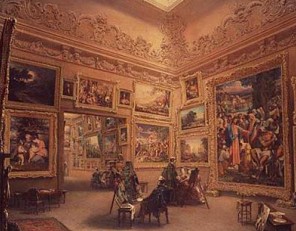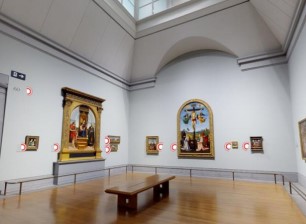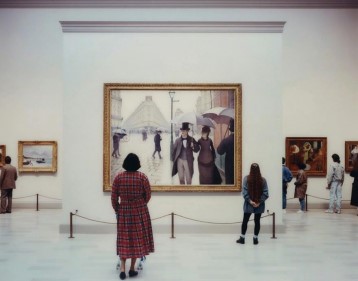Exhibition spaces can mean many things to many people. Art museums, galleries, and critique spaces are all considered exhibit spaces. Numerous factors are involved in the design of an exhibition space. Lighting, visitor circulation, layout, and color are all elements that are included in the strategic planning of an exhibit. The spatial atmosphere in which the art is displayed impacts the exhibition a great deal.
During the 19th century, museums became more aware that they isolate artwork on walls to avoid overcrowding and visitors having to crane their necks . Placement of artwork began to appear more at eye level leaving the walls emptier and the color of the wall becoming more apparent in the space.


In the later part of the 20th century, the White Cube concept, a style which emphasized the artwork focusing on the relationship between space and visitor became a popular form of exhibition design. This approach minimized visual distractions with the use of bare spaces, white walls, and minimalist frames .

Designing an exhibit is a form of communication perceived differently to each visitor. The exhibition space becomes a space of experience for a specific audience. That space can be influential or unpleasant, the success of the exhibit depends on the visitor’s experience.
Exhibits are successful based on the visitor experience; visitors give museums a purpose and the design of the space influences the visitors throughout the exhibit space. When it comes to visitor experience it is best represented through patterns in which the visitors relate to the exhibits. Design of the exhibit can influence visitor flow, the level and quality of social interactions, visitor attention, and affective responses .Wall color, organization of the artwork, and the direction in which the visitors are guided throughout the space are all factors that create the overall spatial atmosphere that influences a visitor’s mood or behavior.